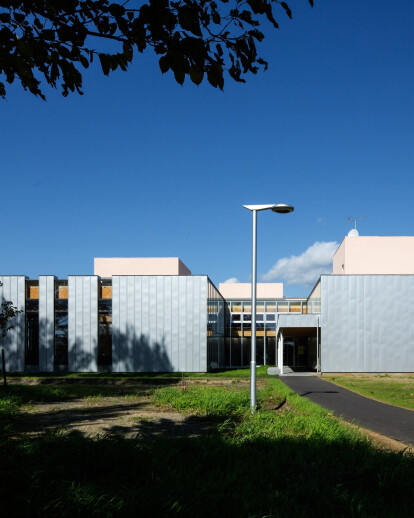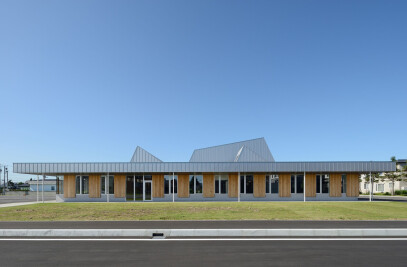This is a community facility in the Soya region of the town of Toyotomi in northernmost Hokkaido. The project supplements the short comings of the neighboring town hall, nursery school, and hospital, and crates a unified network of facilities. The aim was to create a place for citizens of all ages by adding a library facility and a small, multipurpose hall, while keeping the overall scale of the center small.
To curb overall energy consumption, the area of the outer walls was reduced on the basis of a simple, rectangular plan, and the heating load was reduced by using slit windows. In the four entrance areas, the rectangular plan is cut away to form a courtyard that guides natural light into the building.
Inside the expensive wooden building with its framework of locally-produced laminated lumber of Sakhalin fir, concrete core forming earthquake-resisting elements are arranged in conformity with wooden modules. Careful distribution of the courtyards and the concrete cores allow the various functions of the space to be loosely demarcated, while maintaining an appropriate scale and brightness.
The laminated lumber framework of Sakhalin fir, the Japanese oak furniture, the redtinged diatomite coating on the concrete walls-all are local materials. The vertical standing seam method used in the galvanized steel sheeting on the outer walls is an inexpensive and durable construction method widely used in industrial facilities in Hokkaido.

































